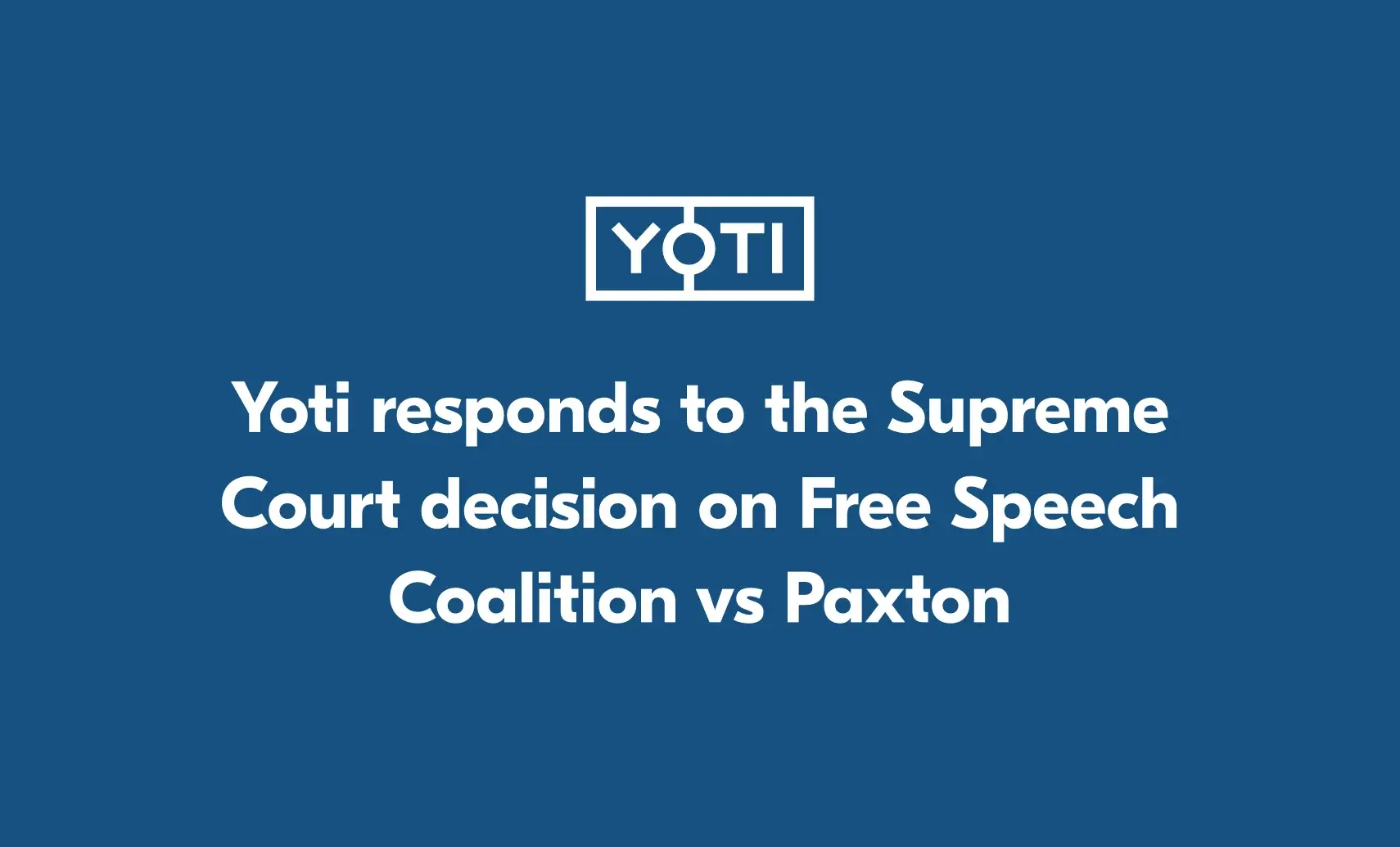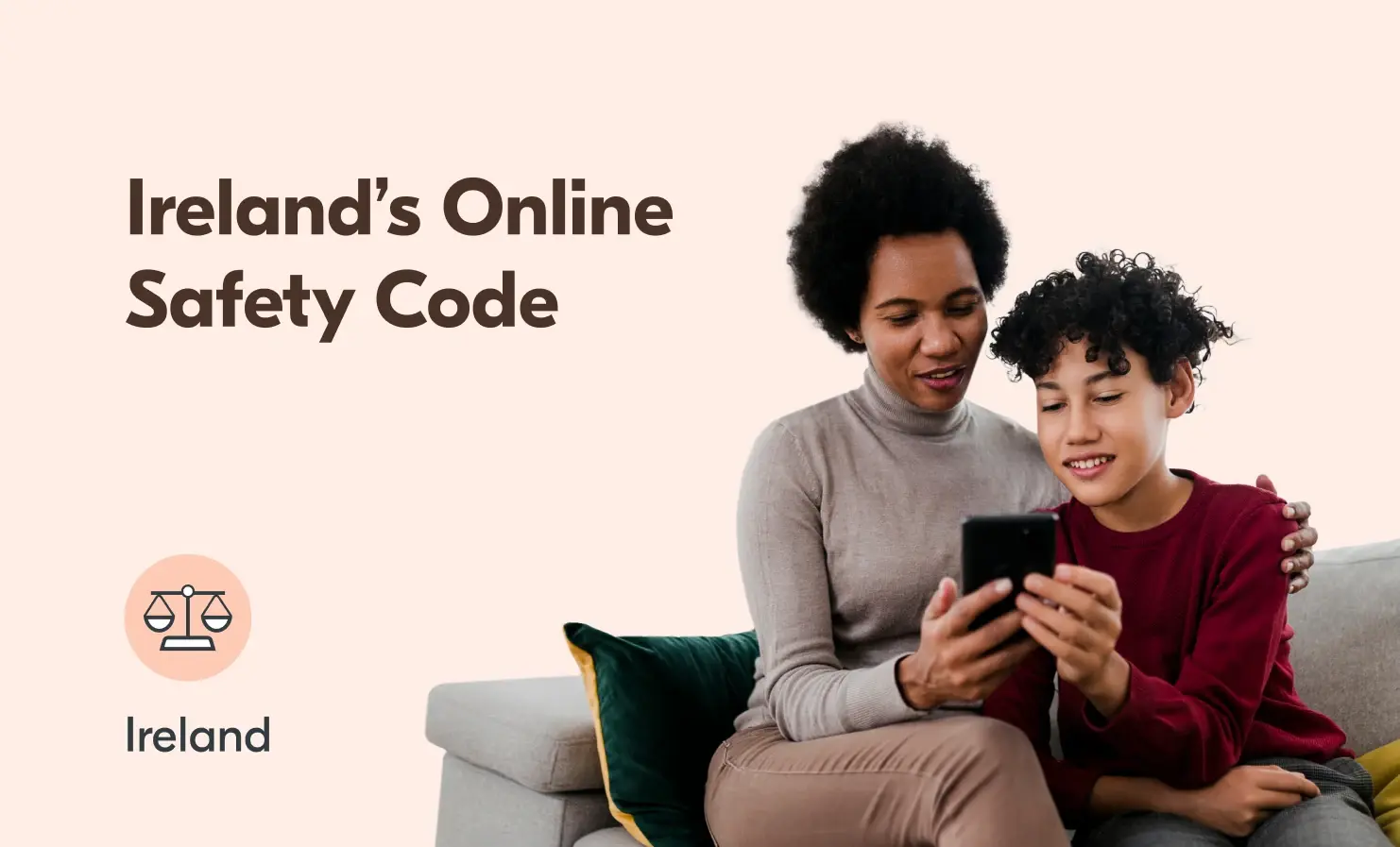
After years of debate and discussion, the Online Safety Act is now law – marking a new chapter in online safety.
There are three key elements within the Online Safety Act that we are ready to help with:
- Age assurance to help platforms create safe, age-appropriate experiences online
- User verification to give users more control over who they interact with online
- Over 18 consent from content creators for the publication of intimate images
Age assurance in the Online Safety Act
The Online Safety Act is not about excluding children from the internet. It’s about giving them an experience that is appropriate for their age. Effective age assurance technology can now make this a reality. Regulated companies will need to implement and enforce age limits and age checking. This will be vital to give users an experience which is suitable for their age.
It’s important that platforms give people a choice in how they prove their age, so people can use the method they feel most comfortable with. Age checking needs to be inclusive for everyone and should not rely on using physical identity documents.
Platforms will need to strike a balance between privacy and accurate age checks. Age verification is different to identity verification. If platforms only need to know that a user is above or below a certain age, users shouldn’t need to share more information than necessary.
We have a range of age assurance solutions which allow platforms to know the age of users, without collecting vast amounts of personal information. These include:
- Age estimation: a user’s age is estimated from a live facial image. They do not need to use identity documents or share any personal information. As soon as their age is estimated, their image is deleted – protecting their privacy at all times. Facial age estimation is 99% accurate and works fairly across all skin tones and ages.
- Digital ID app: a free app which allows users to verify their age and identity using a government-issued identity document. Once verified, users can use the app to share specific information – they could just share their age or an ‘over 18’ proof of age.
Ofcom has said that facial age estimation and digital identity wallets can be highly effective methods to help protect children from accessing pornography online.
Some of the largest platforms are already using our privacy-preserving age assurance technology to assess the age of users, including Instagram, OnlyFans and SuperAwesome.
User verification in the Online Safety Act
Platforms that will be deemed to be ‘Category 1’ will be required to offer adult users tools so they have more control over what content they see and who they engage with online.
Platforms will be required to provide users with functionalities to filter out unverified users. This is particularly powerful because some members of society, in particular women and girls, are experiencing increasing levels of online intimidation, abuse and threats made against them. Filtering out unverified users can help stop anonymous trolls from contacting them.
We recognise the delicate balance the Online Safety Act must maintain between preserving users’ freedom of expression and civil liberties whilst also protecting users from harm.
We welcome these additional user verification and user empowerment duties within the Act as a positive step forward in online safety. Users will be empowered to decide what content they wish to see and which users they want to engage with. All of this can be achieved whilst allowing users to remain anonymous online, should they want or need to.
Users should have a choice of verification methods, including those which do not require identity documents. Verification methods should also be secure and easy to use.
Consent from content creators
Ofcom must quickly start to enforce proportionate measures to prevent sexual image offences such as revenge porn – now an illegal harm under the Online Safety Act. Platforms should ask creators of intimate content to give consent for their content to be published. This will help protect people from intimate image abuse, often wrongly referred to as revenge porn, and from their intimate content being used without their knowledge or consent.
This can be achieved by simply asking adult content uploaders to prove they have an agreement to distribute intimate images. With our esignature tool, platforms can also receive verified identities and signed consent and distribution rights documents all in one flow.
We can use 1:1 face matching to check the right people are participating in the intimate content and have signed the required consent documents with selfie authentication. And to ensure content creators are aged 18 or over, adult or social platforms can ask signers to upload an ID document or confirm their identity using our free Digital ID app.
Where there are other people featured inside a piece of intimate content, the other people in the content, can also verify that they are over 18 and that they have given consent, in the same way.
To find out how we can help you comply with the Online Safety Act, please get in touch.



